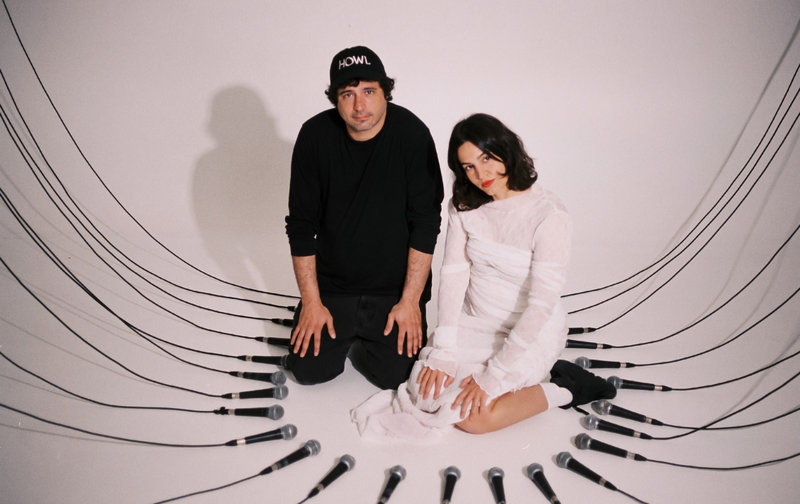Fearless adventures at Sónar festival
From June 16 to 18 such international acts as The Chemical Brothers, Moderat and The Blaze to headline on the return of the summer festival of music, creativity and technology
Almost a thousand days without Sónar, a period so long that some of the artists who find an optimal laboratory for experimentation in the festival can take on the challenge of attempting even more daring projects. Three years after its last – and distant – edition, which ended with Matthew Herbert at the Teatre Grec, the Barcelona Festival of Music, Creativity and Technology returns from June 16 to 18 with new audiovisual shows from, for example, the historic British duo The Chemical Brothers, the Berlin trio Moderat, the French electronic duo The Blaze, and the British musician Bonobo. Also, however, there will be unexpected alliances by local musicians, exclusive to Sónar, highlighting the exploratory nature of both the artists and the festival itself: Maria Arnal and Marcel Bagés reinterpreting their album Clamor, with 36 voices from the Orfeó Català Girls’ Choir; the duo Tarta Relena singing with a choir of 16 voices for the first time on stage; and Niño de Elche, a Sónar classic, putting together a rave with bakala sound and flamenco, accompanied by La Valenciana, the self-proclaimed “first band formed by Valencians living in Barcelona”. Although none of these will headline the busiest concerts at Sónar by Night, they are the ones that make it possible for Enric Palau, co-director of Sónar, to talk of an “expanded” Sónar with artists who “push the boundaries of the festival”. “Either they’ve had more time [to devise projects] or they’ve simply been more creative than ever,” said Palau of this group of artists, which also includes the Mallorcan Samantha Hudson, queer icon and “queen of the underworld”. For Sónar, Hudson has prepared an act that veers between satirical stand-up and musical spectacle, with homophobia, capitalism and consumerism in her sights.
176 activities
The 29th edition of the festival, with more than 200 artists from 32 countries, appeals to “cultural diversity” (“not only in an aesthetic sense, but also in terms of gender and cultural identity”, according to the other co-director of Sónar, Ricard Robles) and the 60 activities and 60 presentations at the Sónar +D creativity and technology congress will address topics such as artificial intelligence, ecology from the sphere of sound and the world of digital economies and cryptoart.
Sónar 2022 will have the same number of days and nights as previous editions: three day events at Fira Montjuïc and two night events at Fira Gran Via. The latter will start earlier, however, at 9.30 pm, with concerts still underway at the Sónar by Day, and finish later (7.30 am). Of the 117 performances spread over 12 proposed stages, it is not difficult to spot those that will attract most spectators: C Tangana, an old acquaintance of the festival, opening the evening programme with a show that, according to Palau, makes a “Brave stylistic leap in terms of quality”; the Barcelona-trained Argentine, Nathy Peluso, who, like C Tangana, was already programmed by Sónar before becoming the phenomenon she now is; and the controversial rapper from Hospitalet de Llobregat, Morad, a generational idol whose “frank and direct way of working both artistically and in his relationship with the public” was emphasised by Palau. There is also the visit of another figure historically acclaimed by the festival: Arca, from Venezuela, who premieres another show specially designed for Sónar in the evening programme; then there are artists who have the mission of turning the festival back into the “World’s biggest dance floor” such as Folamour, Charlotte de Witte, Reinier Zonneveld, Avalon Emrson and Joy Orbison, alongside others of exotic origins, such as Uganda (Nihiloxica), South Africa (Scorpion Kings) and Taiwan (Veeeky).
An organ at Palau Güell
Beyond Fira Barcelona and Fira Gran Via, and under the name SonarExtra, the festival will also take place in three other spaces in Barcelona: Palau Güell (which will host the Hyperogan project, with an organ capable that can be activated through MIDI computer tools for the first time in Spain, and with the participation of organist Albert Blancafort), the ME Barcelona hotel, home to an immersive audiovisual installation, and the Tàpies Foundation, with the sound installation Sondear, created by Mika Vainio in 2001 to record the urban environment in real time through the vibrations of the sculpture that presides over the building’s facade.
Sónar 2022, which expects to attract 17,000 people during the daytime and some 32,000 at night, aims to reach pre-pandemic attendance figures with a budget very similar to that of 2019: 9.45 million euros, of which almost 6% are from public funds (the Catalan government and Barcelona City Council, but also the Ministry of Culture and the European Commission), with 16% coming from sponsors.
feature music
An exceptional year
The Barcelona music industry is buzzing with talk about the intense festival calendar of the coming weeks, with two weekends of Primavera Sound preceding Sónar immediately afterwards.
“It’s been an exceptional year and we’re working to make it positive for everyone,” said one of Sónar’s two directors, Ricard Robles. When asked if the festival had been courted by Madrid like Primavera Sound, he replied: “We’ve been here for 29 years and have received many calls, but we’re absolutely rooted in the city. We’re happy to export but also to come back here later.”
Sónar held its first edition in Lisbon a few weeks ago and will land in Mallorca this summer with Un Sónar Village in S’horabaixa, an event that will be held “in the middle of nature” and host some of the most important artists in international electronic dance on three summer dates.

